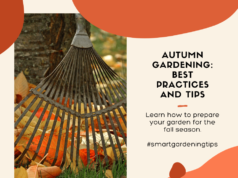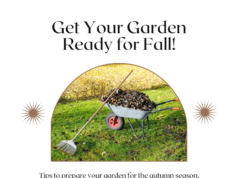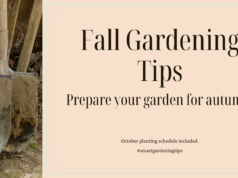| Your Essential Guide to Garden Jobs in September |

Welcome to our comprehensive guide to garden jobs in September! As summer comes to an end and the leaves start to fall, it’s time to shift your focus to essential gardening tasks that will help keep your garden thriving during this transitional period.
In this guide, we will discuss the necessary steps to prepare your garden for the cooler weather ahead, as well as tips and strategies for maintaining the health and vitality of your plants. From harvesting late summer crops to preparing your soil for next year’s growing season, we’ve got you covered.
Key Takeaways:
- September is a transitional period for gardens, and there are essential tasks that should be done to keep your garden thriving.
- Tasks include preparing your garden for fall, transitioning your plants, harvesting late summer crops, clearing out annuals and perennials, planting for fall and winter, lawn care, pruning and trimming, weed control, soil preparation, and pest and disease management.
- Adapt the tips and tasks based on your specific climate and gardening preferences to achieve optimal results.
Preparing Your Garden for Fall
September is the perfect time to take care of your garden maintenance before the cooler months arrive. A well-prepared garden will reward you with a beautiful landscape when spring comes around. Here is your September garden checklist to keep your garden in top shape:
- Remove spent annuals and deadhead perennials. This will encourage new growth and prevent disease from spreading.
- Plant fall annuals and perennials. Popular options include chrysanthemums, pansies, and sedum.
- Prepare garden beds for winter. Add compost, manure, or any other suitable organic matter to enrich the soil.
- Trim back any dead branches from trees and shrubs. This will encourage new growth and prevent any potential damage during winter storms.
- Water your lawn and garden beds deeply. This will ensure that plants have enough moisture to sustain them through the fall season.
By following these simple steps, you’ll be able to prepare your garden for fall and ensure that it thrives during the cooler months. Your hard work will pay off with a beautiful garden in spring.
Transitioning Your Plants
As summer fades and fall approaches, your plants will need some extra attention to ensure a smooth transition. Here are some September gardening tips to help your plants stay healthy and vibrant:
- Water: As the weather cools down, you’ll need to adjust your watering schedule to avoid over or under-watering. Make sure your plants receive enough water, but avoid saturating the soil.
- Fertilize: September is a great time to fertilize your plants. Choose a slow-release fertilizer to provide consistent nutrients throughout the fall season.
- Cut back: Some plants may benefit from a pruning in September. For example, trimming back perennials and removing dead branches can help prevent disease and promote new growth.
- Protect: As temperatures drop, some plants may be more vulnerable to frost damage. Cover delicate plants with cloth or burlap to protect them from the cold.
By following these seasonal gardening tasks, you can help your plants adjust to the cooler weather and thrive through the fall season. Keep in mind that different plants have unique needs, so be sure to research specific care instructions for your individual species.
“Your plants are counting on you to help them make it through the fall season. By following these September gardening tips, you can ensure they stay healthy and vibrant.”
Harvesting Late Summer Crops
You’ve worked hard all summer to cultivate a bountiful garden, and now it’s time to reap the rewards of your labor. September is the perfect time to harvest the remaining crops from your summer garden. Whether you have a few straggling vegetables or a plentiful harvest, it’s important to know when and how to best harvest your crops to maximize flavor and freshness.
First, it’s important to identify which crops are ready for harvesting. Look for visual cues such as the color of the fruit or vegetable, as well as size and texture. For example, tomatoes should be a deep red and slightly soft to the touch when ripe, while cucumbers should be firm and bright green.
Once you’ve identified which crops are ready, use the proper tools to harvest them. For vegetables such as tomatoes, peppers, and eggplant, use pruning shears or a sharp knife to gently cut the stem. Be careful not to damage the fruit or the plant. For vegetables like cucumbers and squash, gently twist the vegetable until it separates from the plant.
When harvesting fruits like apples or berries, be sure to pick them gently by hand. Avoid using tools that could damage the fruit or the plant.
After harvesting your crops, be sure to handle them with care. Store them in a cool, dry place to preserve their freshness and flavor. Avoid washing them until just before use, as excess moisture can lead to spoilage.
Harvesting Tips
To get the most out of your late summer harvest, follow these tips:
- Harvest in the early morning or late afternoon when temperatures are cooler
- Handle crops gently to avoid damage
- Store crops in a cool, dry place to preserve freshness
- Avoid washing crops until just before use
- Donate any excess produce to local food banks or shelters
Clearing Out Annuals and Perennials
In September, your focus should shift to preparing your garden for the fall season. This involves clearing out any remaining summer flowers and preparing your perennials for the colder months ahead. Here are some essential fall garden jobs for garden maintenance in September:
- Remove any dead or dying annuals from your garden beds.
- Trim back perennials to a few inches above the ground.
- Clean up fallen leaves and debris from your garden beds.
- Divide and transplant any crowded or overgrown perennials.
Clearing out your garden beds not only helps make your garden look tidier, but it also helps prevent the spread of disease and pests. By removing any dead or dying plants, you are minimizing the chances of pests or diseases overwintering in your garden.
“Clearing out your garden beds not only helps make your garden look tidier, but it also helps prevent the spread of disease and pests.”
Planting for Fall and Winter
In September, it’s time to start thinking about planting for the fall and winter months. While the summer growing season is coming to an end, there are still plenty of crops and flowers that thrive in the cooler weather ahead. Here is your planting guide for September:
- Vegetables: September is the ideal time to plant cool-season crops such as broccoli, Brussels sprouts, cauliflower, kale, and lettuce. These vegetables prefer cooler temperatures and will grow well in the fall and winter months. You can also plant garlic and shallots in September, which will be ready for harvest in the summer.
- Flowers: Fall offers a unique opportunity to add color to your garden. Some popular flowers to plant in September include pansies, mums, and asters. These plants can add vibrant colors to your garden and can withstand mild freezing temperatures.
- Herbs: September is the perfect time to plant herbs such as chives, cilantro, dill, parsley, and thyme. These herbs are hardy enough to survive colder temperatures and will continue to grow well into the fall and winter months.
When planting for fall and winter, it’s important to consider the timing and location of your garden. Choose a location that receives ample sunlight and provides good drainage for your plants. You should also pay attention to the average first frost date in your area and plan accordingly.
Another important factor to consider when planting for fall and winter is soil preparation. Add organic matter such as compost or aged manure to your soil to help retain moisture and provide essential nutrients for your plants.
By following this planting guide for September, you can ensure that your garden continues to thrive throughout the fall and winter seasons. Happy planting!
Lawn Care in September
Maintaining a healthy lawn in September is essential for the overall health of your garden. Here are a few September gardening tips to help you keep your lawn lush and green:
- Continue watering your lawn as needed, especially during dry spells.
- Mow your lawn regularly, but avoid cutting it too short. This will help prevent stress and damage to the grass.
- Consider aerating your lawn to improve drainage and allow for better absorption of nutrients.
- Fertilize your lawn with a slow-release fertilizer to promote growth and health.
- Keep an eye out for pests and disease, and treat them promptly to avoid damage to your lawn.
Following these simple garden jobs in September will help you maintain a healthy, vibrant lawn. Remember to adjust these tips based on your specific climate and grass type.
Pruning and Trimming
Pruning and trimming are essential tasks for maintaining the health and appearance of your plants. In September, it’s time to focus on pruning specific plants to encourage new growth and maintain their shape.
Pruning Techniques
When pruning, it’s important to use proper techniques to avoid damaging your plants. Use sharp, clean tools to make precise cuts at a 45-degree angle, just above a node or bud. For dense shrubs, make cuts at varying lengths to promote fuller growth.
Plants to Prune
In September, focus on pruning shrubs that have finished flowering, such as hydrangeas and roses. Remove any dead or diseased branches, and trim back overgrowth to maintain the shape of the plant.
Trimming Techniques
Trimming is different from pruning, and involves removing the tips of branches to promote bushier growth. Use shears to make clean cuts, and trim back up to one-third of the plant’s overall size.
Plants to Trim
Trim back fast-growing perennials, such as mums and asters, to promote bushier growth and prevent them from becoming leggy. Trim back herbs and foliage plants like basil and lavender to use fresh or dry for the winter months.
Your September Garden Checklist:
- Prune shrubs that have finished flowering
- Remove dead or diseased branches
- Trim fast-growing perennials to promote bushier growth
- Trim herbs and foliage plants to use fresh or dry
Weed Control
Weeds can be a nuisance to your garden since they compete for resources with your plants, harbor pests and diseases, and spoil the overall aesthetic of your garden. To maintain a healthy garden, it’s important to control and prevent weed growth.
The following are effective gardening tasks you can implement in September as part of your garden checklist:
- Regularly weed garden beds, container gardens, and lawns. Remove weeds by hand or with a hoe, making sure to get the roots.
- Add a layer of mulch around plants and in garden beds. This helps suppress weed growth by blocking sunlight and preventing weed seeds from germinating.
- Use organic weed control methods, such as vinegar, boiling water, or corn gluten meal. Be careful when applying these methods, as they can also harm your plants if not used properly.
- Consider using weed barriers, such as landscape fabric or plastic sheeting, to prevent weed growth in areas where you won’t be planting anything new.
By incorporating these gardening tasks into your September garden checklist, you’ll be able to effectively control and prevent weeds in your garden, ensuring your plants have the resources they need to thrive.
Soil Preparation
September is an excellent time to start preparing your soil for next year’s growing season. Healthy soil is essential for the growth of strong, robust plants. By following our tips for soil preparation, you can ensure your garden will thrive next year.
One of the first steps in soil preparation is to test your soil’s pH levels. You can purchase a soil test kit from your local garden center or use the services of a soil testing lab. This will help you determine if your soil is too acidic or too alkaline and take appropriate steps to correct it.
If your soil is too acidic, you can add lime to neutralize it. If it is too alkaline, you can add sulfur to lower the pH. Make sure to follow the recommended rates for your specific soil type and crop needs.
Another critical step in soil preparation is to add organic matter. Organic matter provides essential nutrients and improves soil structure, allowing for better drainage and water retention. You can add compost, aged manure, or shredded leaves to your soil to increase organic matter content.
Additionally, you can add mulch to your garden beds to protect the soil from erosion and temperature fluctuations. Mulch also helps keep the soil moist and reduces weed growth, making it an excellent addition to any garden.
Finally, fall is an excellent time to plant cover crops, which help prevent soil erosion, add nutrients, and improve soil structure. Some popular cover crops include clover, winter rye, and hairy vetch.
Garden Maintenance in September – Soil preparation Checklist:
- Test your soil’s pH levels
- Add lime or sulfur if necessary
- Add organic matter such as compost, aged manure, or shredded leaves
- Add mulch to garden beds to protect soil from erosion and temperature fluctuations
- Plant cover crops for added benefits
Pests and Disease Management
September brings a new set of challenges for your garden, as pests and diseases become more prevalent during this time of year. Here are some September gardening tips to help you manage these issues and keep your plants healthy and vibrant:
Identify Pests and Diseases
The first step in pest and disease management is identifying the culprits. Look for common pests such as aphids, whiteflies, and spider mites, and be on the lookout for signs of disease like powdery mildew or blight.
Once you’ve identified the pest or disease, you can take the appropriate steps to control and prevent further spread.
Natural Remedies
There are many natural remedies for common garden pests and diseases. For example, you can make a homemade insecticidal soap to combat aphids and other soft-bodied insects. Neem oil is also effective against a variety of pests and diseases.
For fungal diseases like powdery mildew, you can use a baking soda spray or wettable sulfur. These natural remedies are safer for the environment and your plants than harsh chemicals.
Crop Rotation
Crop rotation is an effective method for preventing the spread of pests and diseases from one season to the next. By rotating crops, you can disrupt the life cycle of pests and reduce the likelihood of disease.
Be sure to plant crops in different families in each growing season, and avoid planting the same crop in the same spot for at least three years.
Regular Maintenance
Regular maintenance is key to pest and disease management. Be sure to remove any dead or diseased plant material from your garden, as these can harbor pests and diseases.
Also, keep your garden clean and free of debris, as this can provide a breeding ground for pests. Regularly prune and trim plants to promote good air circulation and reduce the risk of disease.
By following these seasonal gardening tasks for pest and disease management, you can help ensure your garden stays healthy and productive throughout the fall season.
FAQ
What are some essential garden jobs in September?
Some essential garden jobs in September may include preparing your garden for fall, transitioning your plants, harvesting late summer crops, clearing out annuals and perennials, planting for fall and winter, lawn care, pruning and trimming, weed control, soil preparation, and pest and disease management.
How do I prepare my garden for fall?
To prepare your garden for fall, you can clean up debris, remove fading summer flowers, divide and transplant perennials, plant fall and winter crops, apply mulch, and perform necessary soil testing and amendment.
What should I do to help my plants transition into the fall season?
To help your plants transition into the fall season, you can gradually reduce watering, adjust fertilization, provide shade or protection from harsh weather, and monitor for any signs of stress or disease.
How do I know when to harvest my late summer crops?
The timing for harvesting late summer crops will depend on the specific plant and variety. Generally, you can harvest when fruits and vegetables are fully mature, have reached their desired size or color, and are easily detachable from the plant.
How should I clear out annuals and prepare perennials for winter?
To clear out annuals, you can remove the entire plant, including the roots. For perennials, you can cut back the foliage, remove any dead or damaged parts, and add a layer of mulch to protect the roots from freezing temperatures.
What can I plant in September for the fall and winter seasons?
In September, you can plant cool-season crops such as leafy greens, root vegetables, and certain herbs. You can also consider planting fall-blooming flowers and bulbs for colorful displays later in the season.
How do I take care of my lawn in September?
In September, you can continue to mow your lawn at an appropriate height, water deeply and less frequently, aerate if necessary, overseed bare patches, and monitor for any signs of pests or diseases.
Which plants should I prune and trim in September?
In September, you can prune and trim plants that have finished flowering or fruiting, as well as any damaged or overgrown branches. Examples include certain shrubs, roses, and fruit trees.
How can I control weeds in my garden?
To control weeds, you can manually remove them by hand or with tools, apply mulch to suppress their growth, use weed barriers or fabric, practice proper garden hygiene, and consider using organic or chemical weed killers if necessary.
How do I prepare the soil in September?
To prepare the soil in September, you can perform a soil test to assess its nutrient levels, pH, and composition. Depending on the results, you may need to amend the soil with organic matter, compost, or specific fertilizers to improve its quality for future plant growth.
How do I manage pests and diseases in September?
To manage pests and diseases in September, you can regularly inspect your plants for any signs of infestation or infection, practice good hygiene and sanitation, use natural or chemical treatments when necessary, and encourage beneficial insects and organisms to control pests.
Conclusion
Congratulations! You’ve made it to the end of our essential guide to garden jobs in September. We hope you found these tips and tasks helpful in keeping your garden healthy and vibrant during this transitional time.
Remember, every garden is unique, so make sure to adapt our suggestions to your individual preferences and climate. Whether you’re preparing your garden for fall, harvesting late summer crops, or doing some pruning and trimming, September is a crucial month for ensuring your garden stays healthy and thriving for years to come.
















